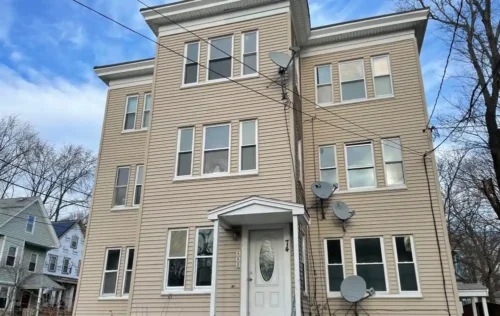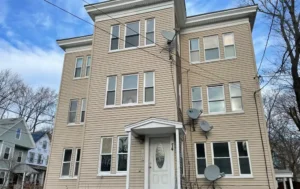Sober Living vs Halfway House: What’s the Difference?

Recovery housing may be a perfect companion to outpatient medication assisted treatment. Outpatient treatment meets the medical and therapeutic needs, while sober living programs provide the safe, group home environment around the clock. It also provides a therapeutic space where you can get support from peers who are also recovering from substance abuse. There are also specific types of sober living homes that cater to your gender, age, and in some cases, profession. People who live in sober homes report that they are non-judgmental and safe spaces where they can focus on their continued recovery.
What is Sober Living?

Recovery residences provide the needed support in early recovery at all hours, when recovery meetings are not available. All sober houses have a zero-tolerance policy regarding the use of drugs or alcohol. Some recovery houses insist on random drug testing to ensure residents remain sober. Individuals who breach this are usually removed from the home immediately to protect the other residents.
- Proven effective in reducing the chance of relapse, sober homes are a collaborative and supportive environment to transition back to everyday life.
- Let’s sum up the similarities and differences between these two forms of recovery housing.
- Those searching for the right sober living home should look for facilities with reputable staff, and a safe and productive living environment and culture.
- In her clinical work, she specializes in treating people of color experiencing anxiety, depression, and trauma through depth therapy and EMDR (eye movement desensitization and reprocessing) trauma therapy.
Support for Me and My Family
Both rehab and sober living offer unique benefits that can significantly enhance recovery success. Choosing the right option depends on individual needs and circumstances. Sober living https://ecosoberhouse.com/article/methadone-withdrawal-symptoms-and-treatment/ homes are typically more affordable than rehab and allow for a longer stay, giving individuals more time to adjust to a life free from substance use. Rehabilitation centers, also known as treatment centers, are institutions that provide therapeutic, medical, and holistic treatments that enable you to learn about and tackle your addiction. Halfway houses tend to offer a shorter length of stay, and your tenure there may be determined by probation or parole requirements.
How does sober living compare to rehab in supporting long-term sobriety?

We do not receive any commission or fee that is dependent upon which treatment provider a caller chooses. For many, the thought of returning home after addiction treatment can be daunting. Substance abuse can affect all aspects of a person’s life, including how they function in their family, work, and community.
Sober Living Houses vs. Rehab Centers and Halfway Houses
For anyone ready to take the next step sober house vs rehab towards recovery, contact The Grove Estate to discuss your situation, answer questions, and provide the guidance needed to start the journey to sobriety. Asking thorough questions during tours or interviews with staff can provide insight into whether a sober living home is the right fit for you or your loved one. Often, folks who have completed a sobriety treatment and transitioned into a sober home… Halfway houses, like other recovery and sober-living houses, are intended to gently reintroduce tenants back into society, free from the pressures and triggers of a potentially dangerous home environment.

An important consideration that should not be overlooked is the possibility of checking into a sober living facility. For some people, a sober living environment, such as a sober home, may even serve as a rehab alternative. Going to meetings as a way to recover from addiction is an excellent plan.
Get Help With Alcohol Addiction
The Sinclair Method, or TSM, is a novel approach to managing alcoholism, or helping anyone who feels that they drink too much alcohol to reduce and work towards quitting drinking. The controversial part of TSM, for some people, is that patients continue to drink during the early part of medical treatment. The majority of the rehab experience may be attending group meetings on a daily basis as well as engaging in what is called 12 step facilitation. 12 step facilitation is the process of introducing the Rehab client to the experience of attending 12 step meetings, such as Alcoholics Anonymous. People can experience specific challenges in recovery depending on their gender. By providing separate homes, facilitators can provide gender-specific care to improve the chances of success.
Sober Living Houses

When we enroll in a sober living program, we receive round-the-clock supervision and support. Peer advocates run the houses and remain available to us for the duration of our stay. They keep the facilities in tip-top shape and answer any questions we may have in the early stages of recovery. While sober living houses have research touting their efficacy, it is also important to remember that they are still environments where you are living with others and the focus is on staying sober. Suppose you’ve recently relapsed and found that the stress of being in environments around alcohol and drugs or a lack of structure is particularly triggering. As you can imagine, most sober living residences would not be prepared to facilitate TSM for their clients.
Most residents of these homes have recently completed an inpatient or outpatient treatment program. Additionally, seeing these experts in rehab may not provide any additional benefit to the rehab client. Unless the doctors who say clients and Rehab are prepared to provide proven medical therapies, it’s questionable whether their services will contribute to long-term recovery from addiction. Given these struggles, men-only homes usually focus on early treatment, mental health support, relapse prevention, and aftercare programs.
- Residents pay rent to live there at a value similar to renting privately in the local area.
- There is such a thing as an ideal way to tackle an addiction, but that ideal is individual, and there are realities that stand in the way of offering everyone the best treatment possible.
- Sober living staff may help connect residents with services such as educational and career training.
- If you or your loved one needs to go to a sober living facility, contact your local healthcare professional or medical professional for a referral.
- However, most individuals living in a sober living home pay out of pocket and are employed while living in the home to support the cost of the rent.
The Need for Supportive Housing
Residents of a halfway house are required to pay a portion of their income toward their rent. The costs of halfway houses vary depending on the number of services and amount of privacy offered. Reframe packs the support of a sober living facility into an easy-to-use phone app. We give you the resources you need to stay sober, from in-depth courses to a craving-beating toolkit.
